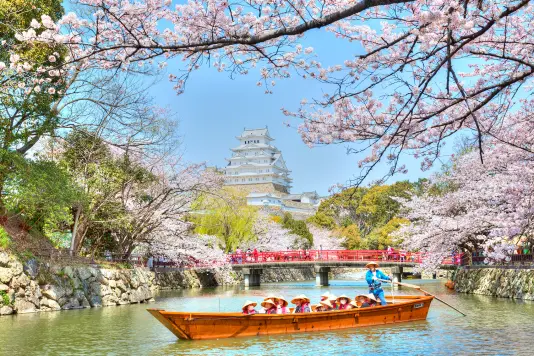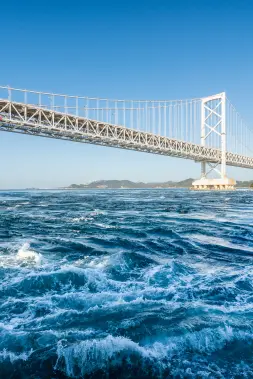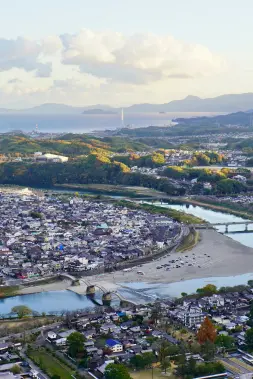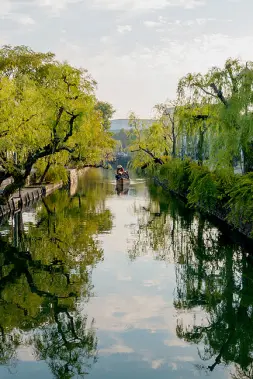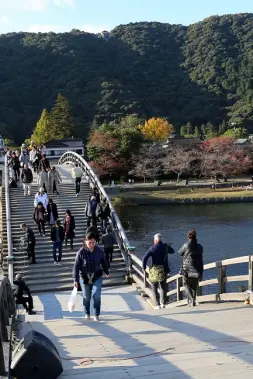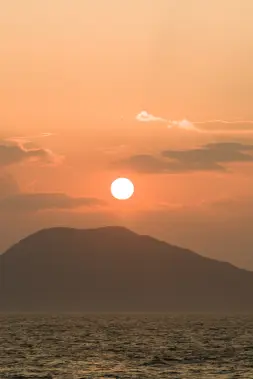Adventure & Experience
Discover World-Renowned Modern Architecture by Tadao Ando and ‘Japan’s Oldest’ Shrine on Awajishima Island

-
- DESTINATION NAME
- Hyogo
-
- RELATED TAGS
-
- LAST UPDATED
- 08 March, 2022
Awajishima (Awaji Island) is a proud host to some of the best modern architecture created by Tadao Ando. Come here to see one of Ando’s boldest creations, Honpukuji Temple, also known as the ‘Water Temple.’ If it’s traditional architecture that you seek, you will find Japan’s legendary ‘oldest shrine,’ the Izanagi Shrine, worth the trip to this island. Finally, be prepared to be moved by the botanical bounty on display at Yumebutai’s Botanical Museum.
Japan’s Legendary Island of Awajishima
According to Japanese mythology, Awajishima was the first of Japan’s islands to be created by the gods Izanagi and Izanami. Izanagi Shrine commemorates these gods and is widely believed to be Japan’s oldest shrine. Many locals and tourists alike visit the shrine to pay respect to the kami (gods). On the morning of my visit, I saw several people doing the rounds paying their respects at various stations on the grounds, bowing before each kami. A holy tree named Meoto-ookusu (the husband and wife giant camphor tree) is a 900-year-old tree that used to be two separate trees that grew into one. It is popular among visitors who come to pray for a harmonious marriage, an uncomplicated pregnancy, and healthy children.
Pass through the final gate at Izanagi Shrine, where the world seems to slow down suddenly. On the 22nd of each month, a special evening shrine viewing is held. On this day, the front shrine, main gate, and great stone torii are illuminated. Moreover, the entrance pathway to the shrine is lit with 300 candles, creating a sacred aura.
Modern Japanese Architecture That Leaves You Speechless
Tadao Ando is recognized as one of Japan’s leading architects and a champion of the minimalist approach in contemporary architecture. In regards to his work, he states:
“I always try to reduce all the material elements as much as possible so the space itself can become rich and stimulating.” —Tadao Ando
Ando’s modernist architecture of Honpukuji Temple doesn’t look in the least bit out of place. Set behind a traditional temple building, hidden by trees, you will find an austere-looking concrete wall. Don’t let it fool you. As I passed through the opening at the end of the wall, I was immediately transfixed by the gently curving interior wall, which induced an almost meditative state of calm within me. It is the transition from the first wall to the second that grabs your attention. This is all to prepare you for the surprise around the next corner, a symmetrical lotus pool bisected by a staircase leading to a temple below. As I descended the staircase, an irresistible scent of burning incense beckoned me to enter.
This cavernous structure cleverly muffles sounds from the world aboveground, so there is no question that you have entered a sacred space. On the left, you’ll discover an enormous vermillion wall and latticework windows. Natural light enters the building from its western side, so the late afternoon is most vividly red. At the temple’s center, you’ll be wrapped in absolute silence.
Ando has managed to create a concrete garden to induce meditation, which is not easy to do. As I re-emerged from the temple, the sunlight was shockingly bright. It felt like a rebirth and a new beginning to my day. This temple should be high on your list of temples to see in Japan.
Nature’s Design Meets Modern Japanese Design
Awaji Yumebutai, located on Awajishima’s northern tip, is a magnificent landscape of facilities also designed by the world-famous architect, Tadao Ando.
Inside the Grand Nikko Awaji Hotel, you’ll find Ando’s Marine Wedding Chapel. Ando loves to wow his audience as he has chosen to introduce natural light into the hotel’s chapel via a cross in its ceiling. There is a projection of a cross on display throughout the day, but is most spectacular when the afternoon light casts a natural glow of the cross onto the walls.
The Botanical Museum at Awaji Yumebutai is absolutely enormous! The garden is replanted seven times each year and is full of exotic trees, plants, orchids, and sculptures. My visit coincided with the exhibition of the Hanami Garden, which is a modern Japanese-style garden. There was soothing music playing in the background to help induce a feeling of total relaxation— what a great place to finish a tour of the Seto Inland Sea. Although my time at Setouchi was coming to an end, I didn’t leave the Botanical Museum feeling sad. On the contrary, its explosion of colors and floral scents helped to top off one of the best tours I have had in Japan.
Whether you are coming to Japan for your first visit or your tenth, Awajishima and the other islands of the Seto Inland Sea are a refreshingly different experience. Although they are geographically close to many of Japan’s major urban centers, these islands feel like a million miles away with their quiet towns, blue skies and calm seas. You will want to return to these islands again and again.
How To Get To Awajishima?
Awajishima is accessible by highway express bus from JR Sannomiya Station. The closest Shinkansen high-speed bullet train station, which connects Tokyo, Fukuoka, Kyoto, Osaka, and Hiroshima, is JR Shin-Kobe Station. From JR Shin-Kobe Station, JR Sannomiya Station is close by on the Seishin-Yamate Subway Line. It takes approximately 50 minutes to Awaji Yumebutai, 90 minutes to Sumoto Bus Center, and 90 minutes to Fukura Bus Terminal by highway express bus from JR Sannomiya Station.
How To Get To Awajishima From Tokyo
There is a direct service between Tokyo and Kobe on the JR Tokaido-Sanyo line. From JR Shin-Kobe Station, JR Sannomiya Station is close by on the Seishin-Yamate Subway Line. It takes approximately 50 minutes to Awaji Yumebutai, 90 minutes to Sumoto Bus Center, and 90 minutes to Fukura Bus Terminal by highway express bus from JR Sannomiya Station.
How To Get To Awajishima From Kyoto
There is a direct train between Kyoto and Kobe on the JR Tokaido-Sanyo line. From JR Shin-Kobe Station, JR Sannomiya Station is close by on the Seishin-Yamate Subway Line. It takes approximately 50 minutes to Awaji Yumebutai, 90 minutes to Sumoto Bus Center, and 90 minutes to Fukura Bus Terminal by highway express bus from JR Sannomiya Station.
How To Get To Awajishima From Osaka
There is a direct service between Osaka and Kobe on the JR Tokaido-Sanyo line. From JR Shin-Kobe Station, JR Sannomiya Station is close by on the Seishin-Yamate Subway Line. It takes approximately 50 minutes to Awaji Yumebutai, 90 minutes to Sumoto Bus Center, and 90 minutes to Fukura Bus Terminal by highway express bus from JR Sannomiya Station.
How To Get To Awajishima From Kobe
From JR Shin-Kobe Station, JR Sannomiya Station is close by on the Seishin-Yamate Subway Line. It takes approximately 50 minutes to Awaji Yumebutai, 90 minutes to Sumoto Bus Center, and 90 minutes to Fukura Bus Terminal by highway express bus from JR Sannomiya Station.
Photographs and text by David Ellis
RELATED DESTINATION
Hyogo
Hyogo Prefecture is roughly in the center of the Japanese archipelago. It has the Port of Kobe, which plays an important role as the gateway of Japan. It also is home to plentiful tourist attractions such as Himeji Castle, a UNESCO World Heritage site, and several hot spring areas. Kobe beef, one of the three major brands of wagyu beef, is a delicacy.
